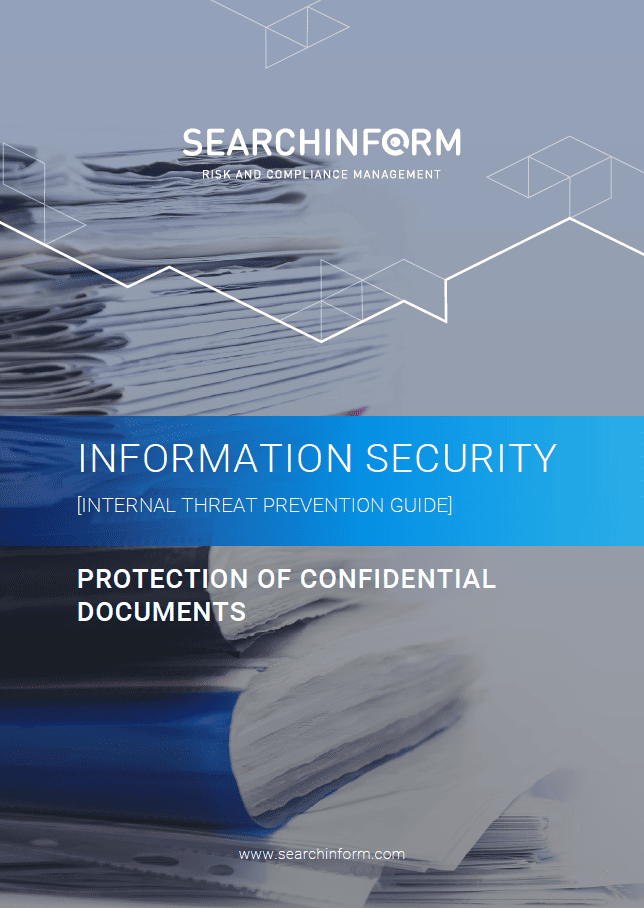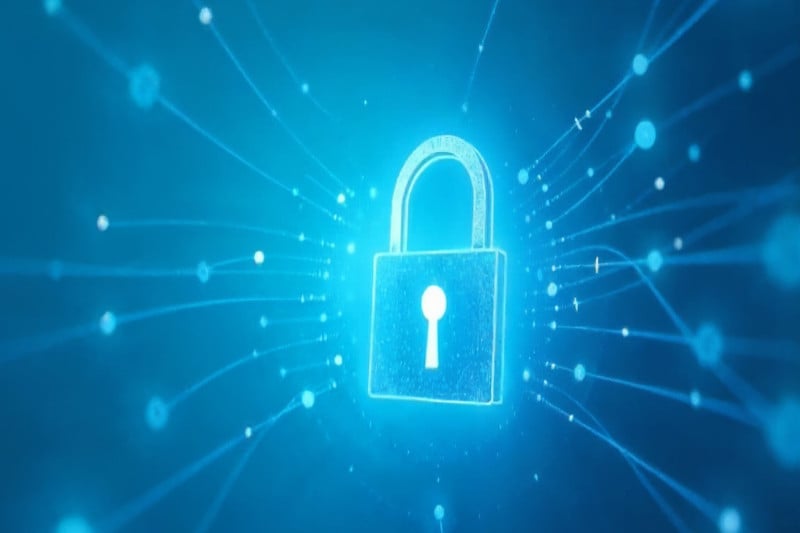Zero Day Attack: What It Is and How to Defend Against It
- Introduction to Zero Day Attacks
- What is a Zero Day Attack?
- Historical Context and Evolution of Zero Day Attacks
- Mechanics of Zero Day Attacks
- Discovery of Vulnerabilities
- Development and Deployment
- Execution and Impact
- Impact of Zero Day Attacks
- Financial Consequences
- Damage to Reputation
- Operational Disruption
- Legal and Regulatory Ramifications
- National Security Threats
- Psychological Impact
- Detection and Prevention
- Proactive Threat Hunting
- Advanced Threat Detection Systems
- Regular Security Audits
- Patching and Software Updates
- Employee Training and Awareness
- Collaboration and Information Sharing
- Continuous Monitoring and Response
- Real-World Examples of Zero Day Attacks
- The Stuxnet Worm: A Game-Changer in Cyber Warfare
- Heartbleed: Exposing the Internet’s Vulnerabilities
- WannaCry Ransomware: A Global Wake-Up Call
- Pegasus Spyware: The Silent Invader
- The Google Chrome Zero Day: A Tech Giant Under Siege
- Lessons Learned from Real-World Zero Day Attacks
- How SearchInform's Tools Help Detect and Mitigate Zero Day Attacks
- Proactive Vulnerability Management
- Behavioral Analysis and Anomaly Detection
- Endpoint Detection and Response (EDR)
- Automated Incident Response
- Comprehensive Security Analytics
- Continuous Monitoring and Reporting
- The Role of SearchInform in a Comprehensive Cybersecurity Strategy
Introduction to Zero Day Attacks
Imagine waking up to find out that your computer, despite having the latest antivirus software, has been compromised. The culprit? A zero day attack. These cyber threats have become a buzzword in the cybersecurity community, notorious for their stealth and the havoc they can wreak. In today’s digital age, understanding zero day attacks is crucial for anyone wanting to safeguard their personal or organizational data. But what exactly makes these attacks so formidable, and how have they evolved over time?
What is a Zero Day Attack?
At its core, a zero day attack exploits a previously unknown vulnerability in software or hardware. These vulnerabilities are termed "zero day" because developers have had zero days to fix the flaw before it is exploited by hackers. Unlike more traditional attacks, zero day exploits are unique in that they take advantage of weaknesses that are not yet known to the public or the vendor. This makes them incredibly difficult to defend against, as there are no existing patches or updates that can prevent the attack.
Zero day attacks can manifest in various forms, including malware, viruses, or even direct network intrusions. They often remain undetected until significant damage has been done. Once an exploit is identified, developers rush to create a patch, but by then, the damage might already be extensive. This urgency and the element of surprise are what make zero day attacks particularly dangerous and challenging to combat.
Historical Context and Evolution of Zero Day Attacks
Zero day attacks have been around for as long as there have been vulnerabilities in software, but their prevalence and sophistication have escalated dramatically over the years. In the early days of computing, such attacks were rare, mainly because the interconnected nature of today's digital landscape did not exist. The few known zero day attacks were often rudimentary and exploited by curious hackers rather than organized crime groups or nation-states.
As technology advanced and the internet became an integral part of daily life, the stakes grew higher. The late 1990s and early 2000s saw a surge in high-profile zero day attacks that targeted both individuals and large corporations. For instance, the Code Red worm in 2001 exploited a vulnerability in Microsoft’s IIS web server, causing widespread damage and highlighting the need for better security practices.
In recent years, the landscape of zero day attacks has shifted dramatically. Today, these attacks are often orchestrated by sophisticated entities, including state-sponsored hackers. They are used not only for financial gain but also for espionage and sabotage. The infamous Stuxnet worm, discovered in 2010, is a prime example of a highly sophisticated zero day attack. It targeted Iran’s nuclear facilities, causing physical damage to centrifuges and showcasing the potential for cyber warfare.
The evolution of zero day attacks underscores the ongoing arms race between hackers and cybersecurity professionals. As attackers develop more advanced methods, defenders must continuously innovate to stay one step ahead. Understanding the history and development of these attacks is essential for preparing for future threats and developing robust defense mechanisms.
Mechanics of Zero Day Attacks
Unveiling the intricate mechanics behind zero day attacks reveals a fascinating yet alarming world of cyber espionage. These attacks are not merely random acts of digital vandalism; they are meticulously planned operations often carried out with precision and patience. To understand how zero day attacks work, it’s essential to break down their lifecycle from discovery to exploitation.
Discovery of Vulnerabilities
The journey of a zero day attack begins with the discovery of a vulnerability. This discovery can occur through several avenues. Sometimes, it’s a result of dedicated research by security experts who are paid to find flaws before malicious actors do. More often, however, these vulnerabilities are uncovered by hackers, who then choose to keep them secret. They might exploit these weaknesses themselves or sell the information on the dark web to the highest bidder. The allure of financial gain and the challenge of outsmarting sophisticated systems drive many hackers to seek out these hidden flaws.
Development and Deployment
Once a vulnerability is discovered, the next step is developing the exploit. This is where the true technical prowess of the hacker comes into play. Crafting an effective exploit requires an in-depth understanding of the target system and the specific flaw. It involves writing code that can infiltrate the system, often bypassing existing security measures. This stage can take days, weeks, or even months, depending on the complexity of the target.
The deployment of the exploit is the critical phase where the zero day attack comes to life. Hackers use various methods to deliver their malicious code. Phishing emails, malicious websites, or direct network attacks are common delivery mechanisms. The goal is to trick the target into executing the code, thus compromising their system without their knowledge. In many cases, the delivery method is tailored to the target, increasing the chances of successful infiltration.
Execution and Impact
When the exploit is deployed, the execution phase begins. This is where the zero day attack does its damage. Depending on the hacker’s intent, the consequences can vary widely. Some attacks aim to steal sensitive data, such as personal information or intellectual property. Others might be designed to disrupt services, causing financial losses or damage to a company’s reputation. In more severe cases, such as state-sponsored attacks, the goal might be to sabotage critical infrastructure, leading to widespread chaos.
The impact of a zero day attack often goes unnoticed until it’s too late. Because the vulnerability is unknown, traditional security measures like antivirus software and firewalls are ineffective. By the time the attack is detected, the damage is already done. This stealthy nature is what makes zero day attacks so dangerous and challenging to defend against.
Understanding the mechanics of zero day attacks highlights the complexity and sophistication involved in these cyber threats. It underscores the importance of proactive cybersecurity measures and continuous vigilance in the ever-evolving digital landscape. As hackers become more adept at discovering and exploiting vulnerabilities, the need for innovative and resilient defense strategies becomes paramount.

Impact of Zero Day Attacks
When zero day attacks strike, the repercussions can be swift and devastating. These attacks can inflict significant damage on individuals, organizations, and even entire nations. Their impact extends beyond immediate financial losses, affecting trust, security, and operational continuity in profound ways.
Financial Consequences
The financial toll of a zero day attack can be astronomical. Companies may face direct losses from stolen funds or intellectual property, but the indirect costs often far outweigh these. Think of the expenses related to incident response, system recovery, and the implementation of new security measures. For instance, a major data breach can force a company to spend millions on forensics, public relations, and legal fees. Moreover, the stock market often reacts negatively to news of a significant breach, causing a drop in share prices and reducing the company's market value.
Damage to Reputation
Beyond the immediate financial impact, zero day attacks can severely tarnish an organization’s reputation. Customers trust companies to protect their personal data, and when that trust is broken, the fallout can be extensive. A breach can lead to a loss of customer confidence, resulting in decreased sales and long-term damage to the brand’s reputation. In the competitive business world, regaining trust is a monumental task. Negative publicity can linger, affecting not just customer relationships but also partnerships and investor confidence.
Operational Disruption
Zero day attacks can bring business operations to a grinding halt. Essential systems might be rendered inoperative, leading to downtime that disrupts services and productivity. For instance, if a zero day exploit targets a critical software application used by a hospital, it could impact patient care and safety. Manufacturing plants might see production lines stop, leading to delays and financial losses. In the digital age, where many businesses rely heavily on technology, the operational disruption caused by such attacks can be crippling.
Legal and Regulatory Ramifications
The legal implications of a zero day attack can be severe. Organizations are often required to comply with various data protection regulations, such as GDPR in Europe or CCPA in California. A breach resulting from a zero day exploit can lead to substantial fines and legal actions. Regulators may impose hefty penalties for failing to protect customer data adequately, and affected individuals might file lawsuits for damages. The legal landscape around cybersecurity is becoming increasingly stringent, and non-compliance can have long-lasting repercussions.
National Security Threats
In the realm of national security, zero day attacks pose a particularly ominous threat. State-sponsored hackers often use these attacks to infiltrate critical infrastructure, gather intelligence, or even launch offensive operations. For instance, a zero day exploit targeting power grids, water supply systems, or communication networks can have catastrophic consequences. The Stuxnet worm, which targeted Iran's nuclear program, is a chilling example of how zero day attacks can be weaponized for geopolitical purposes. Such incidents underscore the need for robust cybersecurity measures to protect national interests.
Psychological Impact
The psychological impact of a zero day attack should not be underestimated. For individuals affected by such breaches, the sense of violation and insecurity can be profound. Knowing that one's personal information has been compromised can lead to stress and anxiety. For employees within the targeted organization, the pressure of managing and mitigating the fallout can result in burnout and decreased morale. The pervasive threat of cyber attacks contributes to a broader atmosphere of distrust and unease in the digital world.
The far-reaching impact of zero day attacks highlights the need for comprehensive cybersecurity strategies. As these threats evolve, so too must our defenses. The stakes are high, but with vigilance, collaboration, and innovation, it is possible to mitigate the risks and safeguard our digital future.
Detection and Prevention
In the relentless cat-and-mouse game between cybercriminals and security professionals, detection and prevention of zero day attacks are paramount. The challenge is formidable, but with a strategic approach, it is possible to build robust defenses and minimize the risks associated with these insidious threats.
Proactive Threat Hunting
Imagine being able to find a problem before it finds you. Proactive threat hunting involves actively searching for potential vulnerabilities and signs of compromise within a network, rather than waiting for alerts from traditional security tools. This approach requires a deep understanding of the environment and the behavior of both legitimate users and potential attackers. Security analysts use a combination of advanced tools and manual techniques to identify anomalies that could indicate the presence of a zero day exploit. By staying one step ahead, organizations can detect and neutralize threats before they cause significant damage.
Advanced Threat Detection Systems
Deploying advanced threat detection systems is like setting up a high-tech surveillance network. Tools such as Intrusion Detection Systems (IDS) and Intrusion Prevention Systems (IPS) are essential for monitoring network traffic and identifying suspicious activity. These systems use sophisticated algorithms and machine learning to analyze patterns and detect anomalies that might suggest a zero day attack. Additionally, Endpoint Detection and Response (EDR) solutions provide visibility into endpoint activities, enabling rapid detection and response to potential threats. By leveraging these technologies, organizations can enhance their ability to spot and respond to zero day attacks in real time.
Regular Security Audits
Routine security audits are the digital equivalent of regular medical check-ups. They involve comprehensive reviews of an organization’s security posture, identifying potential weaknesses and ensuring that security measures are up to date. During an audit, security professionals assess various aspects of the system, including network configurations, software versions, and access controls. Vulnerability scanning tools can help identify known weaknesses, while penetration testing simulates real-world attacks to uncover hidden flaws. Regular audits ensure that vulnerabilities are identified and addressed promptly, reducing the risk of zero day exploits.
Patching and Software Updates
Keeping software up to date is a fundamental yet often overlooked aspect of cybersecurity. Timely patching and updates are crucial in preventing zero day attacks. Software vendors regularly release patches to fix vulnerabilities, but these updates are only effective if they are applied promptly. Organizations should implement a robust patch management process to ensure that updates are tested and deployed quickly. In environments where immediate patching is not feasible, virtual patching solutions can provide interim protection by mitigating the risk of exploitation.
Employee Training and Awareness
Human error is often the weakest link in the cybersecurity chain. Therefore, educating employees about the dangers of zero day attacks and best practices for avoiding them is essential. Regular training sessions should cover topics such as recognizing phishing attempts, using strong passwords, and reporting suspicious activities. By fostering a culture of security awareness, organizations can empower their workforce to act as the first line of defense against cyber threats. Awareness campaigns and simulated phishing exercises can also reinforce good security habits and help employees stay vigilant.
Collaboration and Information Sharing
In the fight against zero day attacks, collaboration is key. Sharing information about threats and vulnerabilities can significantly enhance an organization’s ability to defend against attacks. Cyber threat intelligence (CTI) platforms enable organizations to share and receive information about emerging threats, zero day exploits, and best practices for mitigation. Collaboration with industry peers, government agencies, and cybersecurity vendors can provide valuable insights and early warnings about potential threats. By working together, the cybersecurity community can build a more resilient defense against zero day attacks.
Continuous Monitoring and Response
Even with the best defenses in place, it is impossible to eliminate all risks. Continuous monitoring and an effective incident response plan are crucial for minimizing the impact of zero day attacks. Security Information and Event Management (SIEM) systems collect and analyze data from various sources to provide real-time visibility into security events. Automated response mechanisms can help contain and mitigate attacks as they occur, while a well-defined incident response plan ensures that teams can act quickly and effectively. Regularly testing and updating the incident response plan is essential to ensure readiness for actual attacks.
The detection and prevention of zero day attacks require a multifaceted approach that combines technology, processes, and people. By adopting proactive threat hunting, advanced detection systems, regular audits, timely patching, employee training, and collaborative efforts, organizations can build a robust defense against these elusive threats. Continuous monitoring and a strong incident response plan further enhance resilience, ensuring that even if an attack occurs, its impact is minimized. In the ever-evolving landscape of cybersecurity, staying ahead of zero day threats is a constant challenge, but with vigilance and innovation, it is a challenge that can be met.
Real-World Examples of Zero Day Attacks
Zero day attacks have wreaked havoc across various sectors, often grabbing headlines and leaving a trail of disruption in their wake. These real-world examples highlight the devastating potential of zero day exploits and underscore the importance of robust cybersecurity measures.
The Stuxnet Worm: A Game-Changer in Cyber Warfare
In 2010, the discovery of the Stuxnet worm marked a significant turning point in the world of cyber warfare. Unlike typical malware, Stuxnet was a sophisticated zero day exploit specifically designed to target industrial control systems. Its primary aim was to sabotage Iran's nuclear enrichment facilities. The worm exploited multiple zero day vulnerabilities in Windows operating systems to infiltrate and manipulate the programmable logic controllers (PLCs) used in centrifuges. This attack not only caused physical damage but also demonstrated the potential for cyber tools to be used as weapons in geopolitical conflicts. Stuxnet’s sophistication and precision changed the landscape of cyber warfare, setting a new precedent for how digital attacks can have real-world consequences.
Heartbleed: Exposing the Internet’s Vulnerabilities
Heartbleed, discovered in 2014, was a catastrophic zero day vulnerability in the widely used OpenSSL cryptographic software library. This bug allowed attackers to read the memory of systems protected by vulnerable versions of OpenSSL, potentially revealing sensitive information such as private keys, usernames, and passwords. The severity of Heartbleed lay in its pervasiveness; it affected millions of websites, including those of major corporations and government entities. The disclosure of Heartbleed led to a global scramble to patch systems and highlighted the critical importance of secure software development practices. The widespread impact of Heartbleed emphasized the need for rigorous testing and validation in open-source software projects.
WannaCry Ransomware: A Global Wake-Up Call
In May 2017, the world witnessed the rapid spread of the WannaCry ransomware, which leveraged a zero day exploit known as EternalBlue. This exploit targeted a vulnerability in Microsoft’s Server Message Block (SMB) protocol, allowing the ransomware to propagate quickly across networks. WannaCry encrypted files on infected systems, demanding ransom payments in Bitcoin for decryption keys. The attack affected hundreds of thousands of computers in over 150 countries, disrupting critical services such as healthcare, telecommunications, and transportation. Notably, the UK’s National Health Service (NHS) faced significant operational challenges as a result of the attack. WannaCry served as a stark reminder of the devastating potential of zero day exploits when combined with ransomware.
and perform with SearchInform DLP:
Pegasus Spyware: The Silent Invader
Pegasus spyware, developed by the Israeli cyber-arms company NSO Group, is a prime example of how zero day vulnerabilities can be exploited for espionage. First discovered in 2016, Pegasus has since been used to target high-profile individuals, including journalists, activists, and government officials. The spyware exploits zero day vulnerabilities in mobile operating systems to gain access to a target’s device, enabling the attacker to read messages, track locations, and activate microphones and cameras without detection. The widespread use of Pegasus raised significant ethical and legal questions about surveillance and the use of cyber tools in espionage. It highlighted the critical need for mobile security and the protection of personal privacy in the digital age.
The Google Chrome Zero Day: A Tech Giant Under Siege
In 2021, a zero day vulnerability in Google Chrome was actively exploited in the wild, prompting an urgent response from Google. The vulnerability, identified as CVE-2021-21148, allowed attackers to execute arbitrary code on targeted systems. Exploitation of this flaw could lead to full system compromise, posing a significant risk to users’ data and privacy. Google responded swiftly by releasing a patch, but the incident underscored the constant threat of zero day exploits, even against the most robust and widely used software platforms. It demonstrated that no system is entirely immune to zero day attacks and that vigilance and rapid response are crucial in mitigating their impact.
Lessons Learned from Real-World Zero Day Attacks
These real-world examples of zero day attacks illustrate the diverse ways in which these exploits can manifest and the wide-ranging impacts they can have. From cyber warfare and espionage to widespread ransomware outbreaks and critical software vulnerabilities, zero day attacks continue to challenge the cybersecurity landscape. The lessons learned from these incidents emphasize the importance of proactive defense measures, continuous monitoring, and swift response capabilities. They also highlight the need for global collaboration in cybersecurity efforts, as the threat of zero day attacks transcends borders and industries.
Understanding the real-world implications of zero day attacks is essential for developing effective strategies to defend against them. As cyber threats continue to evolve, so too must our approaches to cybersecurity, ensuring that we are prepared to detect, prevent, and respond to these formidable challenges.
How SearchInform's Tools Help Detect and Mitigate Zero Day Attacks
In the battle against zero day attacks, having the right tools can make all the difference. SearchInform offers a suite of advanced cybersecurity solutions designed to detect and mitigate these elusive threats effectively. By leveraging cutting-edge technology and comprehensive monitoring capabilities, SearchInform’s tools provide a robust defense against the constantly evolving landscape of zero day attacks.
Proactive Vulnerability Management
Imagine being able to identify and address vulnerabilities before they are exploited. SearchInform's vulnerability management tools proactively scan systems for potential weaknesses that could be targeted by zero day attacks. By continuously monitoring for new vulnerabilities and assessing the security posture of applications and systems, these tools help organizations stay ahead of potential threats. The automated scanning and reporting features ensure that vulnerabilities are promptly identified, prioritized based on risk, and addressed through timely patches or mitigation strategies.
Behavioral Analysis and Anomaly Detection
The ability to detect unusual activity is crucial in identifying zero day attacks. SearchInform’s behavioral analysis tools monitor user and system behavior to establish a baseline of normal activity. By analyzing patterns and identifying deviations from this baseline, the tools can detect anomalies that may indicate a zero day exploit. For instance, if an employee’s account suddenly exhibits unusual access patterns or a system begins to behave erratically, the tools will flag these activities for further investigation. This real-time analysis enables organizations to identify and respond to potential threats before they can cause significant damage.
Endpoint Detection and Response (EDR)
Endpoints are often the first targets in a zero day attack. SearchInform’s Endpoint Detection and Response (EDR) tools provide comprehensive visibility into endpoint activities, enabling rapid detection and response to threats. These tools monitor all endpoint interactions, looking for signs of malicious behavior, such as unauthorized access attempts or suspicious file modifications. When a potential threat is detected, the EDR system can automatically isolate the affected endpoint to prevent the spread of the attack, while also providing detailed forensic data to aid in the investigation and remediation process.
Automated Incident Response
Speed is of the essence when responding to a zero day attack. SearchInform’s automated incident response tools streamline the process of identifying, containing, and mitigating threats. When a zero day exploit is detected, these tools can automatically trigger predefined response actions, such as isolating affected systems, blocking malicious IP addresses, and alerting security teams. This rapid response capability minimizes the time attackers have to exploit vulnerabilities and reduces the overall impact of the attack.
Comprehensive Security Analytics
Understanding the full scope of an attack is crucial for effective mitigation and future prevention. SearchInform’s security analytics tools provide comprehensive insights into security events and incidents. By aggregating and correlating data from various sources, these tools offer a holistic view of the attack, helping security teams understand the methods used by attackers and the extent of the compromise. This detailed analysis informs the development of more effective security strategies and helps organizations strengthen their defenses against future zero day attacks.
Continuous Monitoring and Reporting
In the fight against zero day attacks, continuous vigilance is key. SearchInform’s continuous monitoring and reporting tools ensure that organizations maintain a constant watch over their systems and networks. These tools provide real-time alerts and detailed reports on security events, enabling security teams to quickly identify and address potential threats. The ability to continuously monitor and analyze security data helps organizations stay proactive in their defense efforts, ensuring that they can swiftly detect and respond to zero day attacks.
The Role of SearchInform in a Comprehensive Cybersecurity Strategy
Incorporating SearchInform’s tools into a comprehensive cybersecurity strategy provides organizations with a multi-layered defense against zero day attacks. By combining proactive vulnerability management, behavioral analysis, EDR, threat intelligence, automated incident response, security analytics, and continuous monitoring, SearchInform equips organizations with the capabilities needed to detect, mitigate, and prevent these sophisticated threats. As zero day attacks continue to evolve, having a robust and adaptive security solution like SearchInform is essential for maintaining a strong defense posture and safeguarding critical assets.
Don't leave your organization vulnerable to the devastating impact of zero day attacks. Equip yourself with SearchInform's advanced cybersecurity tools and fortify your defenses today. Take proactive steps now to ensure the security and resilience of your systems.
Full-featured software with no restrictions
on users or functionality
Company news
SearchInform uses four types of cookies as described below. You can decide which categories of cookies you wish to accept to improve your experience on our website. To learn more about the cookies we use on our site, please read our Cookie Policy.
Necessary Cookies
Always active. These cookies are essential to our website working effectively.
Cookies does not collect personal information. You can disable the cookie files
record
on the Internet Settings tab in your browser.
Functional Cookies
These cookies allow SearchInform to provide enhanced functionality and personalization, such as remembering the language you choose to interact with the website.
Performance Cookies
These cookies enable SearchInform to understand what information is the most valuable to you, so we can improve our services and website.
Third-party Cookies
These cookies are created by other resources to allow our website to embed content from other websites, for example, images, ads, and text.
Please enable Functional Cookies
You have disabled the Functional Cookies.
To complete the form and get in touch with us, you need to enable Functional Cookies.
Otherwise the form cannot be sent to us.

Subscribe to our newsletter and receive a bright and useful tutorial Explaining Information Security in 4 steps!

Subscribe to our newsletter and receive case studies in comics!







